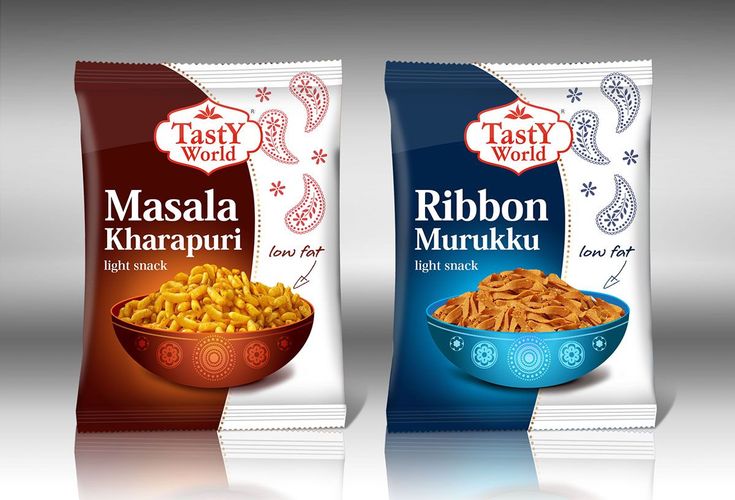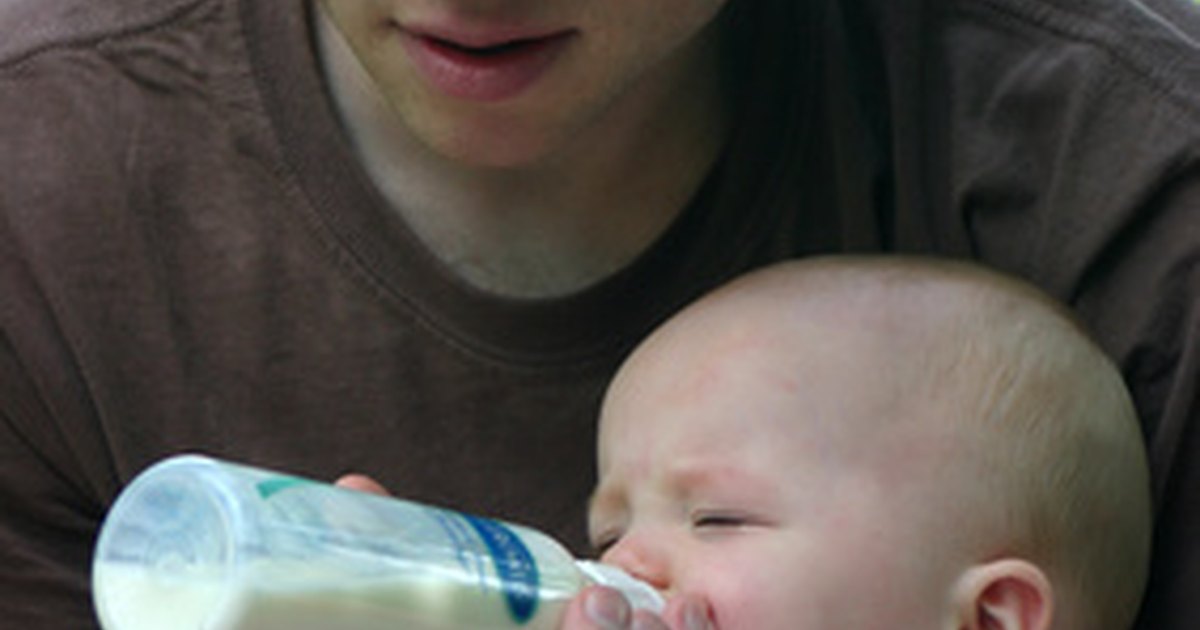Food for baby peacocks
How to Care for Peacock Chicks
By Judith Willsoni sarah mavro/iStock/Getty Images
Raising peafowl chicks is not dissimilar to raising chickens. If you have the peahen, she’ll take care of her brood; all you really need to do is provide suitable food and keep the housing clean. If you decide to raise the chicks yourself, you have more work to do, but the birds will bond more strongly with you.
Housing
Basic housing consists of a sheltered house attached to a large pen. While the birds remain small, a chicken coop and run would do but they’ll need more-spacious accommodation as they grow. Eventually, you can allow them to free-range, provided your neighbors don’t object. Mature peafowl are large and aggressive enough that most wild carnivores won’t consider them as snacks. Keep the peafowl in a secure enclosure until they are at least 3 or 4 months old. The enclosure has two purposes: to protect them from predators while they are small and to ensure they have a good idea of their home range.
Heating
Keep the chicks in a brooder to start with if they are very young -- less than a month old. Despite the size differences, a broody hen could hatch peafowl eggs and raise the chicks if this option is available. Install a heater in the housing for older chicks. Without their mother, they need another source of warmth; even adults need extra heat in winter.
Diet
Provide a shallow bowl or saucer for food. Peafowl chicks get assistance from their mother to start with, without it they're not great at finding and taking food. Ensure the bowl is shallow and low enough that the chicks don’t have to stretch or hop to access the food. Don’t forget a waterer.
Feed the chicks high-protein game bird starter, preferably one specifically for peafowl, until they are about 3 months old, supplementing with green, leafy vegetables such as cabbage, dark lettuce and spinach. After that, gradually change their diet to an adult one of pellets.
Don’t feed your pets anything too fatty or salty. Peafowl are omnivores; they like all the treats chickens do, including dog food, fruit, healthy table scraps and worms from the garden. The diet should consist primarily of pellets.
Peafowl are omnivores; they like all the treats chickens do, including dog food, fruit, healthy table scraps and worms from the garden. The diet should consist primarily of pellets.
Care
Shovel droppings from the housing daily; go for a full clean once a week. Bird waste is rich in nutrients and safe for home composting, so use it in your garden. Spend as much time as you can handling the chicks if you want pet peafowl instead of semi-wild birds.
Considerations
You may need to worm peafowl chicks or deal with other parasites, though these are more of a problem for large flocks with little space. Consult a vet who specializes in game birds and/or poultry for advice.
If you want only peahens or just one peacock and a couple of peahens, bear in mind that small chicks are literally impossible to sex yourself. Peafowl chicks of less than a month old can be sexed only via a genetic test carried out by a vet -- they can’t be sexed by checking the vents like other poultry because the organs are too deep inside. Older ones show differences in plumage.
Older ones show differences in plumage.
Warnings
Peacocks are extremely noisy, and not in a melodious way. If your neighbors wouldn’t tolerate a rooster, they certainly won’t appreciate a peacock. Peahens are a little quieter, but they can still be pretty vocal. Before rushing to adopt peafowl chicks, ensure that your neighbors won’t mind and you are not breaking any local regulations.
These birds are large, and they live for a long time -- at least 20 years, sometimes twice that -- making them a long-term commitment. They're unsuitable if you don't have plenty of space. They need either an enormous enclosed and covered area or to be free-range, which again involves checking with your neighbors. Not everybody would be delighted to find a peacock rooting through their prize flowers.
References
- United Peafowl Association: Keeping Peafowl -- Do's and Don’ts
- Bow’s Peafowl Farm: General Care Tips for Peafowl
- Backyard Chickens: Peafowl 101 -- Basic Care, Genetics and Answers
Photo Credits
Writer Bio
Judith Willson has been writing since 2009, specializing in environmental and scientific topics.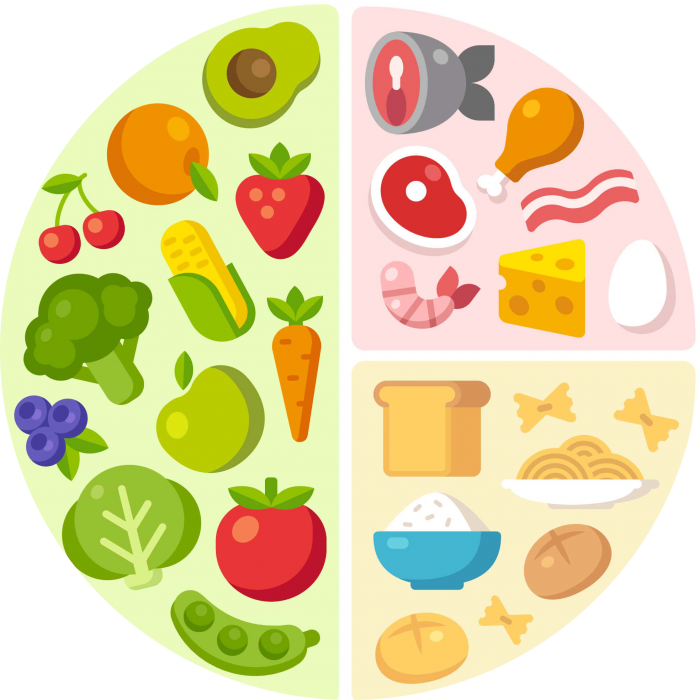 She has written content for school websites and worked for a Glasgow newspaper. Willson has a Master of Arts in English from the University of Aberdeen, Scotland.
She has written content for school websites and worked for a Glasgow newspaper. Willson has a Master of Arts in English from the University of Aberdeen, Scotland.
5 Best Items for Baby Peacocks to Eat
*This post may have affiliate links, which means I may receive commissions if you choose to purchase through links I provide (at no extra cost to you). As an Amazon Associate I earn from qualifying purchases. Please read my disclaimer for additional details.Peacocks are very beautiful birds. Everyone loves to see the majesty of peacocks. While peacocks have beautiful trains that are fun to watch, the splendor of those trains reflects the hard work of a farmer or homesteader when raising the peacocks as babies.
What are the best items to feed baby peacocks so that they can grow into beautiful and healthy adults? Here are some great ideas:
Table of Contents
1. Processed Feed
Processed feeds are number one because they contain all the nutrients that peacocks need to grow. Processed feeds are not just rich in proteins, they also contain fibers, carbohydrates, vitamins, minerals, etc. in recommended quantities (according to the age of the bird).
Processed feeds are not just rich in proteins, they also contain fibers, carbohydrates, vitamins, minerals, etc. in recommended quantities (according to the age of the bird).
What kind of feed should you give to your baby peacocks? You should feed your peachicks with feeds rich in proteins. You can give your peachicks starter turkey or gamebird feed.
According to the age of your peachick, they need 25-30% crude protein in their feed.
Do not feed your baby peacocks with starter chicken feed because chicken feed does not contain sufficient proteins for your peachicks to grow as fast as they should. Typical chicken feeds contain 16-25% crude protein according to the age of the chicken.
2. Mealworms
Mealworms are the larvae of the mealworm beetle. Mealworms are a special source of food for your peacocks because they can also be used as treats to reward your peachicks during training.
You can buy mealworms from feed mills, local stores, and online malls. You can also cultivate your own mealworm colony to save some cash.
You can also cultivate your own mealworm colony to save some cash.
If you cultivate your own mealworms, you get to select the kind of food used to raise the mealworms and thus, indirectly regulate what your peachicks eat. Why not save some cash by feeding your peachicks with fresh mealworms made by you?
3. Other Insect Larvae
Aside from mealworms, there are several other insect larvae that you can feed your peachicks with. Examples are:
- Black soldier fly larvae
- Housefly larvae
- Grub worms
Just like mealworms, it is easy to cultivate the larvae listed above or you can get them from local stores around you.
4. Bugs and Little Invertebrates
The thing about little critters is that they make up a whole lot of the peacock’s diet in the wild. This means that if you want your baby peacocks to grow more naturally, you should give them (or allow them to search for) more insects and other little invertebrates.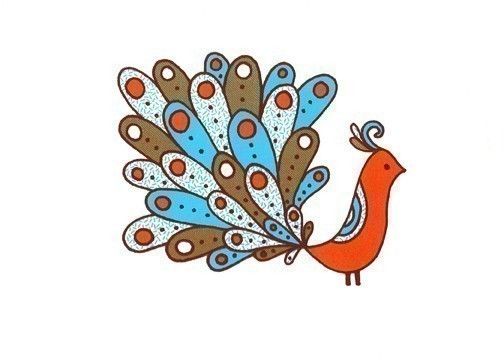
Examples of invertebrates that peacocks can eat in the free-range are:
- Earthworms
- Nematodes
- Spiders
- Snails
- Slugs
Asides from invertebrates, other animals (vertebrates) that peachicks can eat are lizards, amphibians, snakes, etc.
If you are brooding your baby peacocks in a brooder box (i.e. they are not with their mother), you should feed them with processed feed and very few insects and other little critters because of the possibility of harmful microbes.
5. Fruits and Vegetables
Most of the feed options listed above enrich your peacocks with a whole lot of proteins. Fruits and vegetables, however, can give your baby peacocks the vitamins, minerals, and a few other nutrients that they need.
You should give your peacocks a lot of vegetables. When bored, peachicks can peck vegetables hung from the roof or ceiling as a green piñata. You can also mix vegetables with other types of feeds given to the birds.
Examples of vegetables that you should give to your peacocks are:
- Cabbage
- Broccoli
- Lettuce
- Spinach
- Carrot leaves
- Arugula
- Cauliflower
As for fruits, you can give your peacocks some fruits, but not in large quantities. Fruits contain a lot of sugars and very few proteins so too many fruits can be bad for peacocks. Give fruits to peachicks as treats (i.e. give them occasionally).
Examples of fruits that you can give to peacocks are:
- Bananas
- Grapes
- Apples
- Watermelons
- Mangoes
Make sure that your peacocks have access to major sources of proteins (such as their processed feed) when you feed them with fruits and vegetables.
Remember that baby peacocks need as many proteins as they can get, or they will not grow beautiful and strong quickly.
Now you know some of the best items to feed your peacocks with. What can you give to your peacocks as treats?
Best Treats for Peachicks
Here are some good choices of treats for peachicks:
1.
 Grains, Seeds, and Peas
Grains, Seeds, and PeasGrains, seeds, and peas are excellent treats for peachicks. They also make great food ideas for peachicks, but you should give them as treats (occasionally) to increase the value that your peachicks have for them.
Grains are rich in carbohydrates and proteins. During the winter, you should give your peachicks a lot of grains at night because digesting grains can keep your birds warm.
Examples of grains that you can feed peachicks with are:
- Maize
- Wheat
- Rye
- Barley
- Sorghum
Seeds are also great for peachicks as they are rich in proteins, vitamins, and minerals. Examples of seeds for peachicks are:
- Sunflower seeds
- Safflower seeds
- Peanuts
- Peas
- Watermelon seeds
Peacocks love grains, peas, and seeds, so make sure you give them some treats they love.
2. Blueberries, Grapes, and Other Fruits
Many homesteaders agree that their peacocks always go crazy for blueberries. Blueberries are sweet and have sugars, vitamins, minerals, etc. Remember that you should not give too many blueberries to your peachicks.
Blueberries are sweet and have sugars, vitamins, minerals, etc. Remember that you should not give too many blueberries to your peachicks.
Other fruits that you can give to your peachicks are:
- Watermelon
- Blackberries
- Raspberries
Make sure that your peachicks get a lot of healthy fruits.
3. Arthropods and Other Invertebrates
Remember that peacocks love invertebrates. Some invertebrates that you can give to your peachicks as treats are:
- Crabs
- Snails
- Shrimp
- Earthworms
- Mealworms
Peacocks love crustaceans such as shrimp and crabs. Give your peachicks shrimp only occasionally.
4. Raisins
Peachicks love dried grapes or raisins. Raisins are rich in sugars, fiber, vitamins, etc. You should give raisins to your peachicks but don’t give too many because raisins are high in sugars and fibers.
5. Pigeon Mix
Every bird loves pigeon mix. Pigeon mix is made from a bunch of grains and other ingredients. You can easily use pigeon mix to train your peacocks (newly released from the brooder) to return to their coop or pen at night.
Pigeon mix is made from a bunch of grains and other ingredients. You can easily use pigeon mix to train your peacocks (newly released from the brooder) to return to their coop or pen at night.
Give pigeon mix to peachicks occasionally.
Related Questions and Answers
1. What is the Best Source of Food for Peachicks?
The best feed for peachicks is processed feed. Processed feed is best because it is carefully made for the specific age of your peachicks. As peachicks and other young birds grow, their protein needs can increase or reduce according to the species.
While insects, insect larvae, etc. can have proteins, they may be digested slower because they are still in their raw form. Processed feeds, however, have readily available proteins with a high rate of digestibility. This means that your peachicks will grow faster with the right processed feed.
If there are no peacock-specific feeds in stores around you, you should feed your peachicks with starter turkey or wild gamebird feed.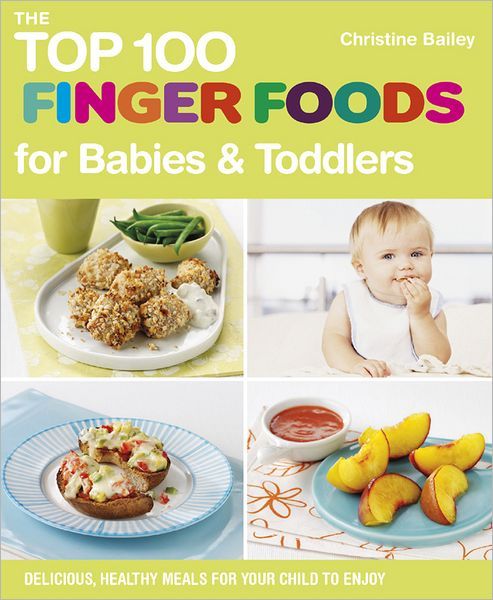
2. Why Do Peacocks Need a Lot of Proteins?
If you consider the protein needs of common birds such as chickens and ducks, you will agree that peacocks need a lot more proteins. Peacocks need proteins because of their trains. The feather of peacocks is made of keratin which is a hard form of protein.
To grow beautiful feathers, your peachicks need a lot of proteins.
Aside from the production of feathers, peachicks need proteins to grow and repair tissues, become sexually matured (i.e. start the production of egg and sperm cells), development of their brains, etc.
3. Can You Change the Diet of Peachicks?
If you wish to change the brand of feed you give to your baby peacocks, you can change it, but not all at once. To change the feed of your peachicks, introduce the new feed to them while also feeding them with the old feed. Continue doing so for a week or two until you stop feeding them with the old feed.
By introducing the new feed before stopping the old feed, you are giving your peachicks enough time to get used to the new feed before stopping the old feed entirely.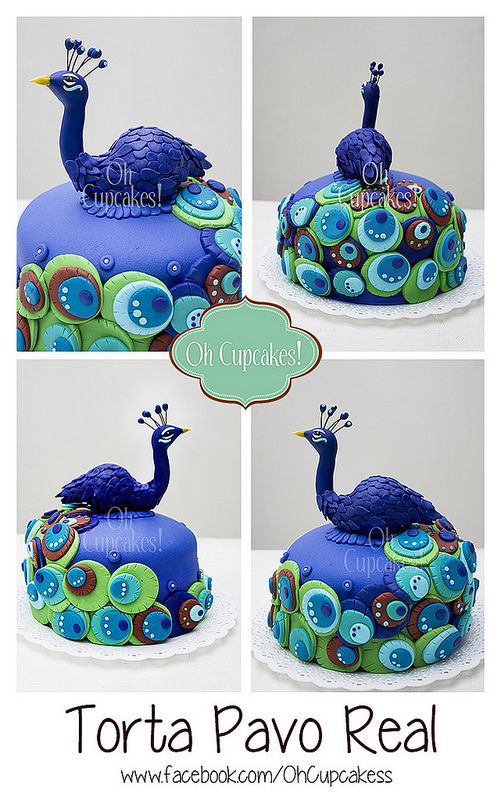
4. Can You Raise Peachicks in a Brooder Box?
You can raise peachicks in a brooder box, but should only do so when they are not with their mother. Peachicks learn faster with their mother. Mother peacocks (or peahens) teach their peachicks what they can eat.
Peachicks raised by their mothers are also stronger than peachicks raised in brooder boxes.
5. Can Peacocks Eat Bread?
Peacocks can eat bread. Bread is safe for peacocks but does not contain sufficient proteins and other nutrients for your peacocks.
You should not give bread to your peacocks regularly. Instead of bread, feed your peacocks with protein-rich feeds and treats.
Final Thoughts
Peacocks need protein-rich foods to grow beautiful and strong. Examples of food ideas for peacocks are processed feeds, mealworms, fruits, and vegetables.
Remember to give your peacocks healthy treats.
Resources
- https://animals.mom.com/care-peacock-chicks-6395.
 html
html - https://wowmypetdidthat.com/treats-for-peacocks/
- https://chickenandchicksinfo.com/what-do-baby-peacocks-eat/
- https://www.purinamills.com/chicken-feed/education/detail/beyond-backyard-chickens-raising-peacocks-and-game-birds
- https://www.backyardchickens.com/threads/help-what-to-feed-a-baby-peacock.217288/
What do peacocks eat. How to feed peacocks at home
The health of a peacock depends entirely on a balanced and proper diet. In their natural environment, they feed on a wide variety of foods: seeds of plants and fruits of trees, shoots, roots, collect insects and feast on small reptiles, hunt snakes and eat mollusks with pleasure. Feeding peacocks at home differs in many ways from the habitual wild individuals and depends on many factors.
Content
- 1 Feeding Pavlinov
- 1.1 Marriage period and hatching
- 2 Feeding of chicks
- 3 types of feeding of peacock
- 3.
 1 Dry Method of feeding 9000 3.2 Wet feeding method
1 Dry Method of feeding 9000 3.2 Wet feeding method
9000 3.3 Combined method - 3.
- 4.1 Complementary feed
- 4.2 Succulent feed
- 4.3 Root crops
- 4.4 Dairy products
- 4.5 Fish
- 4.6 Eggs
- 4.7 Grain feed
Feeding peacocks
Each breeder must take into account the fact that birds need a balanced and complete feed, otherwise metabolic problems and various diseases are possible.
A properly selected diet should be fully suitable for birds in terms of the composition of vitamins and trace elements and be to the liking of birds.
Feed must be fresh and tasty for poultry
Taste is very important - although birds are omnivores, if they do not like the food, they are more likely to become exhausted and die of hunger. Since peacocks belong to the chicken order, you can feed them the same food as chickens. They perfectly eat cereals, various root crops and vegetables, fruits, like to feast on pieces of bacon and minced meat or fish, crackers, mowed grass.
An adult eats approximately: 9 per day0003
- 60 grams of crushed corn,
- about 120 grams of grain mix,
- 55 grams herbal or alfalfa flour,
- 55 grams of peeled and chopped vegetables and fruits,
- fresh grass or hay - ad libitum.
Chalk, fish meal, minced meat or fish fry can be added to the main diet. If it is planned to feed the birds only with grain, it is necessary to place a mixture of table salt with chalk, as well as gravel and birch ash in a separate feeder.
Mating season and brooding
Birds start preparing for the mating season in March. It is during this period that it is important to pay special attention to the proper nutrition of birds. Indeed, the health of the brood will depend on what to feed the peacocks at this time. Breeding birds at the beginning of March are given an additional nutritional supplement consisting of:
- 10 grams of meat meal,
- about 120 grams boiled and chopped potatoes,
- 65 grams of succulent food.
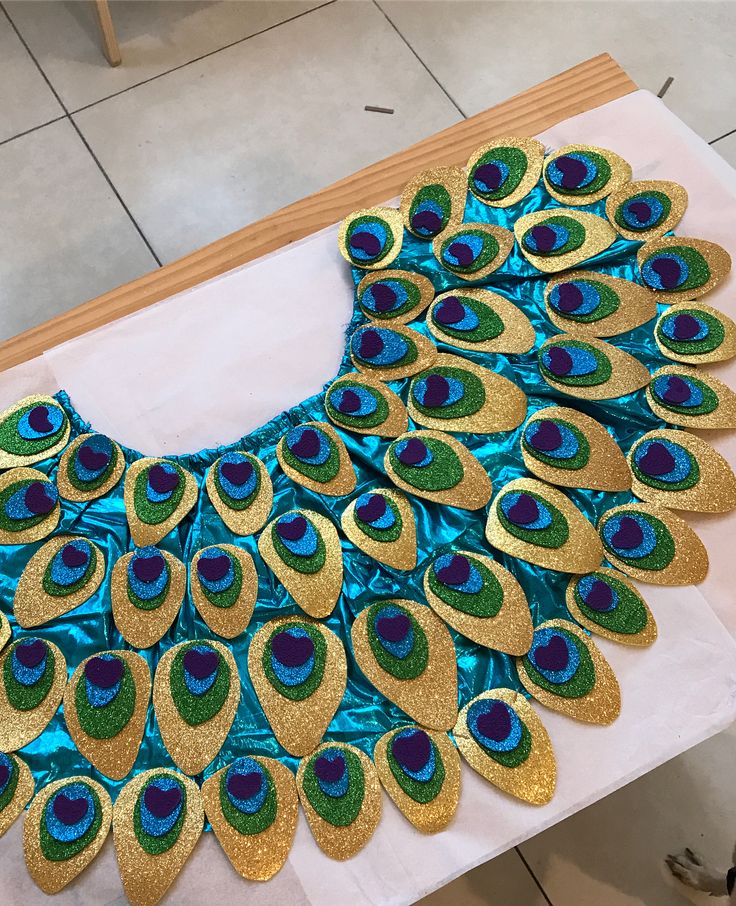
- about 200 grams of dry protein feed.
Minced meat or fish can fill the need for feed of animal origin. It is placed in a separate feeder and offered to the birds a couple of times a week.
Regardless of the time of the year, the birds should be fed at fixed times.
In the morning, soft food is placed in the bird feeder. Grain and feed are given in the afternoon. If the bird is actively eating grain, you can add a little more grain in the evening.
Feeding chicks
Newborn chicks are fed with hard-boiled and finely chopped chicken eggs mixed with chopped greens. Already from the first day, small mealworms can be introduced into the diet, and from the second week, compound feed for pheasants or chickens can be poured into a separate bowl. You can drink babies with both water and yogurt. From the fifth or sixth day, millet porridge cooked in milk or water is gradually introduced into the diet.
Pea and chicks look for insects
Young birds are also fed fresh milk and cottage cheese, fresh herbs, washed and chopped vegetables and fruits. Fresh greens should be in the feeder all the time, like water. The peacock chick is happy to eat insects, minced meat, and root crops.
Fresh greens should be in the feeder all the time, like water. The peacock chick is happy to eat insects, minced meat, and root crops.
Some breeders feed ant eggs, nettle greens and green onions, clover and spinach to their chicks. All new food is added gradually, making sure that the chicks have eaten all the food.
From the second month of life, young animals are completely transferred to an adult diet.
Types of feeding peacocks
The largest nurseries have developed and approved several ways of feeding birds: combined, dry, wet.
Dry method of feeding
Using this method of feeding, the breeder feeds only dry food. Up to 95% of the peacock's diet consists of feed and various grains. In a separate feeder, you must always keep mineral supplements from chalk and coal, as well as vitamins, to replenish the vitamin balance in the body.
Wet method of feeding
Feeding with wet food means giving grain and compound feed soaked or steamed in hot water or milk, various succulent foods, vegetables and root crops, minced meat and fish. The disadvantage of the method is the rapid souring of feed in the summer. Therefore, the feed is placed in the feeder immediately after preparation, and after the bird has eaten, the remains are removed and the feeder is washed.
The disadvantage of the method is the rapid souring of feed in the summer. Therefore, the feed is placed in the feeder immediately after preparation, and after the bird has eaten, the remains are removed and the feeder is washed.
Combined feeding method
Combined feeding birds eat both dry and wet food. Grain mixtures or compound feed can lie in the feeder all the time, but the mixers are laid twice a day. The combined method is preferable because of its diversity and greater balance.
In winter, the diet should be increased by 1.5 times
Types of feed
Only grains and compound feed for peacocks are not enough for a healthy and fulfilling life. Most of the daily diet should be complementary, succulent and protein foods.
Complementary foods
Peacocks' favorite delicacy and main supplementary food are earthworms. In some large farms, they are specially grown in manure or silo pits. Each bird can be fed up to 10 grams of earthworms per day. No less important are flour worms.
No less important are flour worms.
The mealworm is the larva of a small and harmful black beetle called the mealworm. Mealworms are also bred to be fed in a worm farm. A worm-breeder is an ordinary wooden box lined with plywood or tin sheets from the inside. The worm-breeder is filled with old and unsuitable for cooking flour, bran, crackers, various vegetables are added and only then the beetles are launched. The first larvae appear after seven to eight weeks.
Some breeders give peacocks and maggots as protein food. During the summer months, silkworm larvae, apple moth pupae, May beetles and bee larvae play an important role in feeding, especially in feeding young birds.
Succulent food
Succulent food is an irreplaceable source of vitamins and minerals important for the health of a peacock. Juicy feeds include:
- alfalfa,
- clover,
- quinoa and needles,
- dandelions and colza,
- young shoots of nettle,
- peas,
- roots,
- vegetables,
- fruits,
- dairy products,
- fish oil.
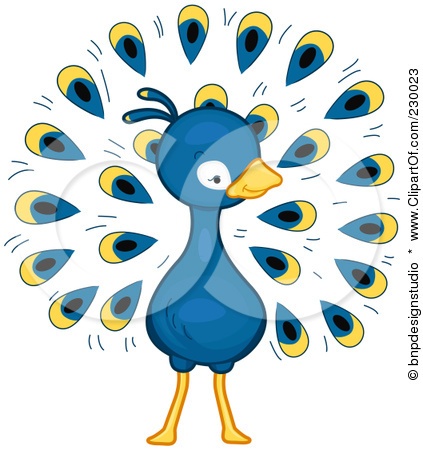
All green fodder is fed to birds in crushed form. In the summer, the grass is given to the birds in plenty. During the winter months, feeders are filled with bean or cereal hay. It is preferable to give alfalfa in the form of flour.
Root crops
Potatoes are the most valuable among root crops. Rich in vitamins and starch, it is included in all mixes and in some cases (in winter, for weakened birds, young animals) can be fed separately. The peacock also eats cabbage with pleasure. Give it both as a whole and in crushed form, separately or as part of a mash. Carrots are especially recommended for chicks, but they are also fed to adults. Carrots are an irreplaceable source of keratin. Large breeders note that their peacocks also ate beets, turnips, and turnips with pleasure.
Root crops must be crushed
Dairy products
Dairy products must also be included in the diet of a domestic peacock:
- curdled milk,
- cottage cheese (non-sour and medium fat),
- whey.

Fish
Boiled fish or live fry, as well as minced fish are good food. This food is rich in important mineral salts, vitamins and proteins. Most often, minced fish or fish is fed along with mixers. Female peacocks that receive fish before the mating season produce more eggs.
Eggs
Chicken eggs are the first and main food of newborn peacocks. However, adults can also be given boiled chicken eggs, as well as eggshells or egg powder.
Grain foods
All grain foods are rich in important carbohydrates, proteins, fats and minerals. The main condition is that the grain must be dry and clean. Peacocks are fed not only with oats and wheat. Corn also plays an important role in the diet. It gives the birds energy, contains many acids, vitamins, carotene. Young growth fed a substantial amount of corn will grow faster and have brighter plumage.
Barley is slightly inferior in composition and usefulness to corn and oats, but it contains fiber necessary for proper metabolism. Millet has been substituted by some breeders for more expensive oats. Nutritionally, these two cultures are very similar. Red millet is very rich in carotene and is often fed to peacocks bred for slaughter. Simply improves both the taste and color of poultry meat. Peacocks willingly eat rice. However, it is worth remembering that rice is a very high-calorie food. Its percentage in the total mass of the stern should not be more than ten.
Millet has been substituted by some breeders for more expensive oats. Nutritionally, these two cultures are very similar. Red millet is very rich in carotene and is often fed to peacocks bred for slaughter. Simply improves both the taste and color of poultry meat. Peacocks willingly eat rice. However, it is worth remembering that rice is a very high-calorie food. Its percentage in the total mass of the stern should not be more than ten.
Estimation of the article:
ACTION OF THE AGASS, Press the Star:
Loading ...
Share with friends:
Twice
share
Plus
share
Class
Link
LOVE
behavioral features and interesting facts
Do peacocks fly or not - this is one of the frequently asked questions, because these birds give the impression of being heavy, and their size is not small. In addition, in their natural habitat they can only be caught walking, and few have seen birds in flight. Today we will consider this issue in detail and find out if peacocks are capable of flying.
In addition, in their natural habitat they can only be caught walking, and few have seen birds in flight. Today we will consider this issue in detail and find out if peacocks are capable of flying.
Do peacocks fly or not?
- 2.1 Video - Flight of the Firebird
- 7.1 Video - Features of the content and breeding of individuals
- 7.2 Principles of arrangement of the aviary
- 7.3 Prices for a netting mesh for fencing a house
- 7.4 Equipment of a house
- 7.5 Features of peacock feeding
- 7.6 Price for bone flour
Characteristics of birds
You can meet these majestic birds in zoos and protected areas around the world. Their natural habitat is dense thickets, flattering areas, but they managed to domesticate a few thousand years ago, which allowed farmers to start breeding birds of paradise.
Their natural habitat is dense thickets, flattering areas, but they managed to domesticate a few thousand years ago, which allowed farmers to start breeding birds of paradise.
Flying peacock
Species of peacocks
There is a greater variety of colors of birds. Despite the fact that they all belong to the same family, only a few of them are preferred to be raised in captivity.
Table #1. Varieties of birds.
| View, illustration | Description |
|---|---|
| Common (Indian) | These birds have bright blue feathers with green and brown patches. Another distinguishing feature of birds is the pinkish beak. Most often you can meet them in zoos, and not on home farms, because they do not get along well in the same yard with other birds and animals. In addition, young animals are sold at too high a price. In the wild, Indian peacocks live in the jungle and some mountainous areas. |
| White | These individuals are a subspecies of the Indian peacock. They are not considered to be albinos - the characteristic color of the feather was obtained due to a genetic mutation during long-term keeping of birds in captivity. It should be noted that such birds appear strictly when white peacocks are crossed with each other. |
| African | Several decades ago, these birds were classified as Indian peacocks, but then, due to some differences, it was decided to isolate their other subspecies. They have no feathers on their heads (there is only a crest), and there is a red spot on the throat. Males have golden and green feathers with a lilac tint on the body, and females with a metallic tint. The beak is silvery with a blue tint. Another distinctive feature is the monogamy of birds of this species. |
| Javanese | This peacock with a bright green color can be found in Asian countries and on the island of Java. The inhabitants of Burma even consider birds to be a national symbol. Of the distinctive features, it should be noted that this is the largest and brightest representative of the family of all existing species. The inhabitants of Burma even consider birds to be a national symbol. Of the distinctive features, it should be noted that this is the largest and brightest representative of the family of all existing species. |
| Black-shouldered | Not a separate subspecies, because it appeared as a result of a mutation of the Indian breed. Males differ from their counterparts in the presence of black wings, and females in a light beige color of the feather. |
Step by Step Guide to Tell a Female Peacock from a Male Peacock
Step 1: The first step is to look at the plumage of the birds. After all, in females (pav) it is faded compared to males. Most often, gray-brown feathers can be found on their body, and colored feathers are only near the wings (color depends on the breed).
The discreet coloration allows the female to hide from predators in the thickets
Step 2: it is also necessary to look at the tail of birds, because only in males it looks like a bright fan, and in “girls” it is almost imperceptible.
In addition to a chic tail, males have an expressive crest on their heads.
Step 3: it is important to pay attention to the size of the body - males are always heavier and larger. This feature allows you to distinguish chicks that do not have permanent plumage.
Even among peacock cubs, males can be found, because they are larger.
Can peacocks fly?
It is rather rare for people to see these majestic birds during the flight. This is due to the fact that they rise into the air only when there is a danger of an attack by predatory animals. Birds are able to fly at speeds of more than 15 kilometers per hour, despite their impressive size. This is their advantage, because it is the massive wings that help the individuals to take off rapidly.
Of course, the flight of birds cannot last too long - they get tired quickly. However, this is often enough to hide from a predator in a safe space. The time they are in the air will differ depending on the breed and the environment around them. For example, some Asian peacocks prefer to live in highlands (up to 1000 meters above sea level) and they can rise into the air quite high.
For example, some Asian peacocks prefer to live in highlands (up to 1000 meters above sea level) and they can rise into the air quite high.
Birds can quickly run away from predators
A flying peacock looks graceful, so this sight usually attracts many tourists. In addition, birds are distinguished by fast running, like their predecessors - wild pheasants.
Often individuals have to take off to climb a tree
Under the conditions of their natural habitat, they climb to the crowns of tall trees for the night. Thus, they hide from danger.
Video - Flight of the firebird
Feeding birds in the natural environment
The main food of peacocks is herbs, so they willingly eat various weeds and small seeds. Birds prefer to settle near the grounds, where they destroy insects, rats and even small snakes.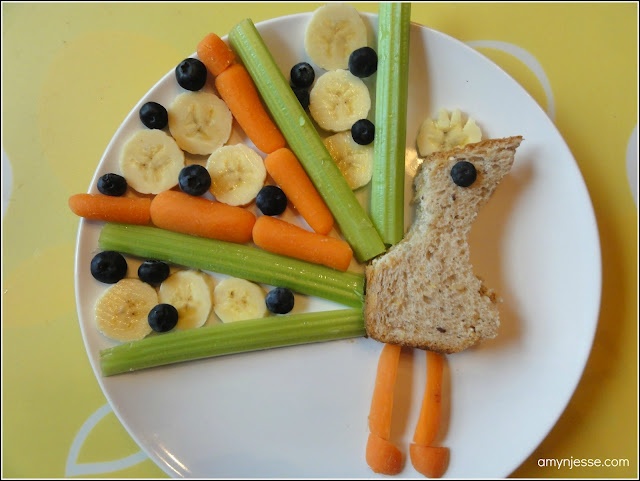
Birds get food only on the ground, not in flight
Features of bird breeding in the natural environment
Most often, peacocks form polygamous families, with the exception of some breeds. They reach puberty at the age of 24 months. So, for each mature male there are 3-4 females (sometimes more). An active breeding period in individuals in nature is observed from the second month of winter to mid-spring (depending on habitat).
During this period, males begin active courtship. They open their tail, try to attract attention, perform a mating dance. Pava independently chooses the strongest male, so fights happen between males.
Peacock mating dance
After mating, the female builds a nest in the soil. She also lays dried grass there, after which she makes a clutch, which usually consists of 5-9 eggs. She incubates the eggs for about 30 days. During this period, it is almost impossible to meet a family of peacocks, because they hide from danger in dense thickets.
Only the female incubates the eggs
When the offspring hatch, the male joins the process of caring for the chicks.
How did the domestication of peacocks happen?
These birds were first domesticated in Asian countries. However, they are still very popular with poultry farmers in India today. There, their meat and eggs are not eaten, but peacocks are considered sacred and kept only as pets. You can see the image of peacocks in old paintings, the walls of Buddhist buildings.
Birds quickly make contact with humans
It is believed that birds came to Europe in the time of Alexander the Great, who brought them as a trophy. From there they began to gradually spread to other countries. However, not every person could afford such an expensive purchase, and birds were considered pets of very wealthy people.
Why are peacocks bred?
Many prefer to keep these birds as pets rather than for the purpose of profit, because they are an adornment of any yard.
However, some poultry farmers raise peacocks in order to obtain:
- Meat. This is a delicacy product that only wealthy people could afford a few decades ago. According to the content of useful components, it has the same composition as turkey meat. This product is considered dietary due to the minimum fat layer, it is allowed to fry, boil, stew.
- Eggs. In our country, peacock eggs are rarely eaten, but Chinese experts use them to prepare medicines, because it is believed that they have healing properties. Doctors recommend eating eggs for patients after major operations, diseases, as well as for pregnant women. In addition, such a product has excellent taste and is quickly absorbed by the human body.
Eggs are actively used in cooking
- Feathers. Feathers of birds are in great demand, which are used as decorations for textiles, as well as souvenirs are made from them. These feathers are collected during the molting of males, because at the end of the mating season they lose almost all the feathers of the uppertail, which then grow again.

Craftsmen make various souvenirs from feathers
- Young. In recent years, many poultry farmers have appeared who willingly acquire such birds for themselves, so farmers prefer to bring young animals for sale.
How to keep peacocks at home?
Keeping birds at home does not require large expenses from the poultry breeder, because the main condition is the availability of free space for walking individuals, because birds spend a lot of time walking.
In winter, a warm room must be prepared for peacocks. However, some breeds are resistant to cold climates, so they are happy to walk in open-air cages even on cool winter days.
Thanks to their adaptation to the cold, peacocks are raised even in the north
Since peahens and peacocks live in families, they need to be given a separate room, otherwise conflicts between males will constantly occur. Another feature of peacocks is that they are very shy, so they should be kept away from sources of noise.
Video - Features of keeping and breeding individuals
Principles of arranging an aviary
Even a beginner can handle the arrangement of an aviary for birds - this will require fixing the supports on which the net is stretched. In addition, a canopy should be installed above a part of the enclosure, where there will be feeders, drinkers and nests. Here the birds can hide from the heat or rain.
Prices for chain-link mesh for poultry house fencing
Chain-link mesh
The floor in the aviary should be covered with sand and placed on the site of the tank with wood ash
Arrangement of the poultry house
season. The construction of this building requires compliance with certain requirements:
The poultry house is connected to the walking area through holes in the wall. Near the walls, it is also necessary to fix feeders with drinking bowls so that it is convenient to fill them with food.
Near the walls, it is also necessary to fix feeders with drinking bowls so that it is convenient to fill them with food.
In addition, perches should be installed inside the house. Their height should be 150 centimeters. Nests are often installed on the floor, their width is 55-60 centimeters, and the depth is 65 centimeters.
Important. The poultry house is equipped with an exhaust system, as well as heaters and lamps. All this is useful for birds in the cold season. You can read more about keeping and breeding peacocks in our special article.
Captive Peacock Feeding Features
While on the run, the birds feed on various insects, herbs, as in the natural environment. When keeping birds in a poultry house, they should be provided with food at least twice a day. During the mating season, the frequency of feeding is increased.
Approximate daily ration for each peacock:
In addition, you must ensure that there is always fresh water.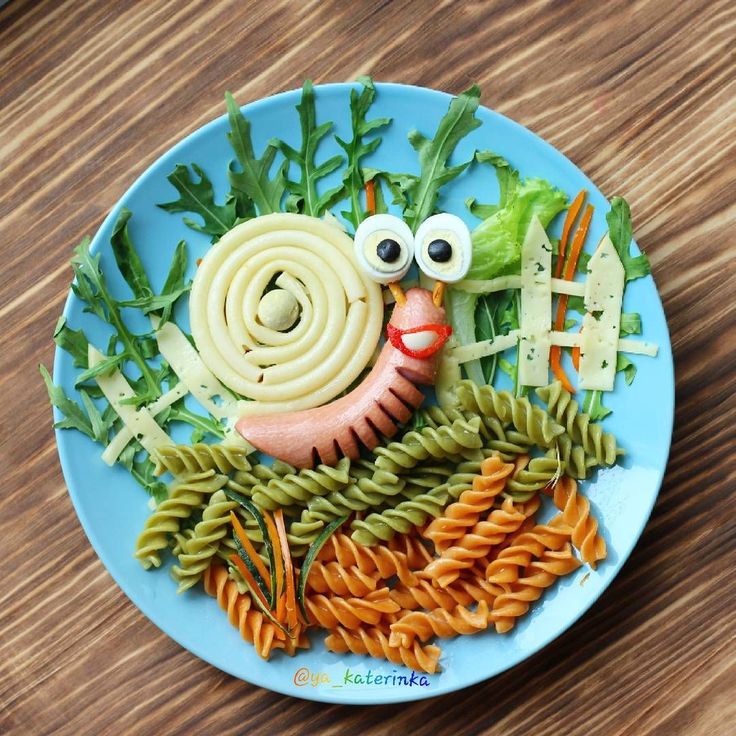 Of the vegetables, peacocks most of all love pumpkin, Jerusalem artichoke, cabbage - all this should be given only fresh.
Of the vegetables, peacocks most of all love pumpkin, Jerusalem artichoke, cabbage - all this should be given only fresh.
Feeding bowls for peacocks
Diseases
Unfortunately, the protective functions of the organism of birds are not resistant. This means that in captivity they often get sick under the wrong conditions, and even a sharp change in feed mixtures sometimes causes sad consequences.
Table #2. Diseases of peacocks.
| Disease type | Symptoms | Causes |
|---|---|---|
| Infections | loss of mobility; inflammation of the mucous membranes of the eyes; diarrhea. | Lack of vaccination, non-compliance with hygiene standards. |
| Worm infestations | anxiety; itching of the skin; Premature shedding. | Cramped poultry house with unsanitary conditions. |
| Metabolic disorders | refusal to eat; · rapid weight loss; presence of ulcers on the skin; diarrhea.  | Poor nutrition or poor quality food. |
Interesting facts
It is worth highlighting a few interesting facts about peacocks:
- The male uses a chic tail-fan not only to attract peacocks, but also to scare off enemies. So, when a predator sees a bright fan with many "eyes" in front of him, he is confused. The male uses this time to fly away.
- In fact, birds have a small tail. Long one and a half meter feathers represent the uppertail. The tail itself is about 45 centimeters long.
- Despite the fact that peacocks are classified as gallinaceous birds, they live longer than their relatives - about 18 years. The average lifespan of a chicken is 3 years.
- Birds communicate with each other by infrasound, which is not able to catch the human ear.
- Birds have an extremely unpleasant, harsh voice that resembles a loud cat's cry.
Peacocks belong to the group of long-lived birds
You can meet a peacock while flying in its natural habitat, because domestic birds take off very rarely or do not do it at all due to the lack of need for protection from predators.



